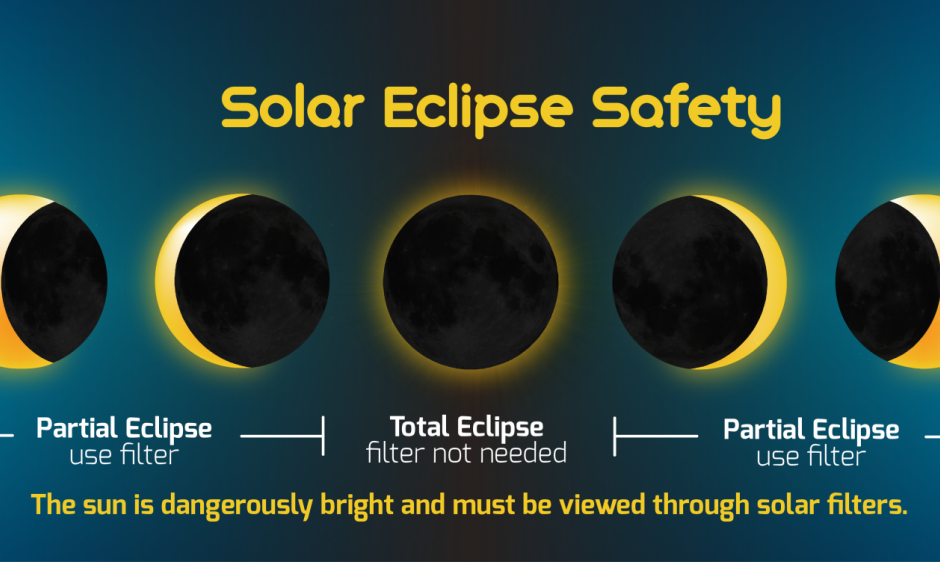
Are you ready for the total solar eclipse on Monday, August 21st, 2017?! While the total eclipse will have no impact upon space weather, it will mark the only time observers on Earth can see the outer solar layer known as the corona with the naked eye. For those in the path of totality, the moon will act as a natural occulting disc and block out the bright layer that shines upon Earth each day – the photosphere. This will allow the corona to become visible around the moon thanks to the sun’s natural light scattering off free electrons streaming from the Sun.
If one looks even closer, you may see a narrow circle of red just along the periphery of the moon – this is the Sun’s chromosphere. This is the layer where prominences (trapped areas of plasma in magnetic field lines) become suspended. Will there be prominences on eclipse day? We can’t say for sure, but if you are lucky enough to be in totality under clear skies, you should be able to see for yourselves! For up to date weather information, please see: https://www.weather.gov/source/crh/eclipse.html
Remember, it is extremely unsafe to look at the Sun with the naked eye; unless it is exactly during the brief period of complete totality; even then, you must not be looking at the Sun when the moon begins to move away from total blocking of the Sun. For more tips on safely viewing the eclipse, please read more from our partners at NASA: https://eclipse2017.nasa.gov/safety